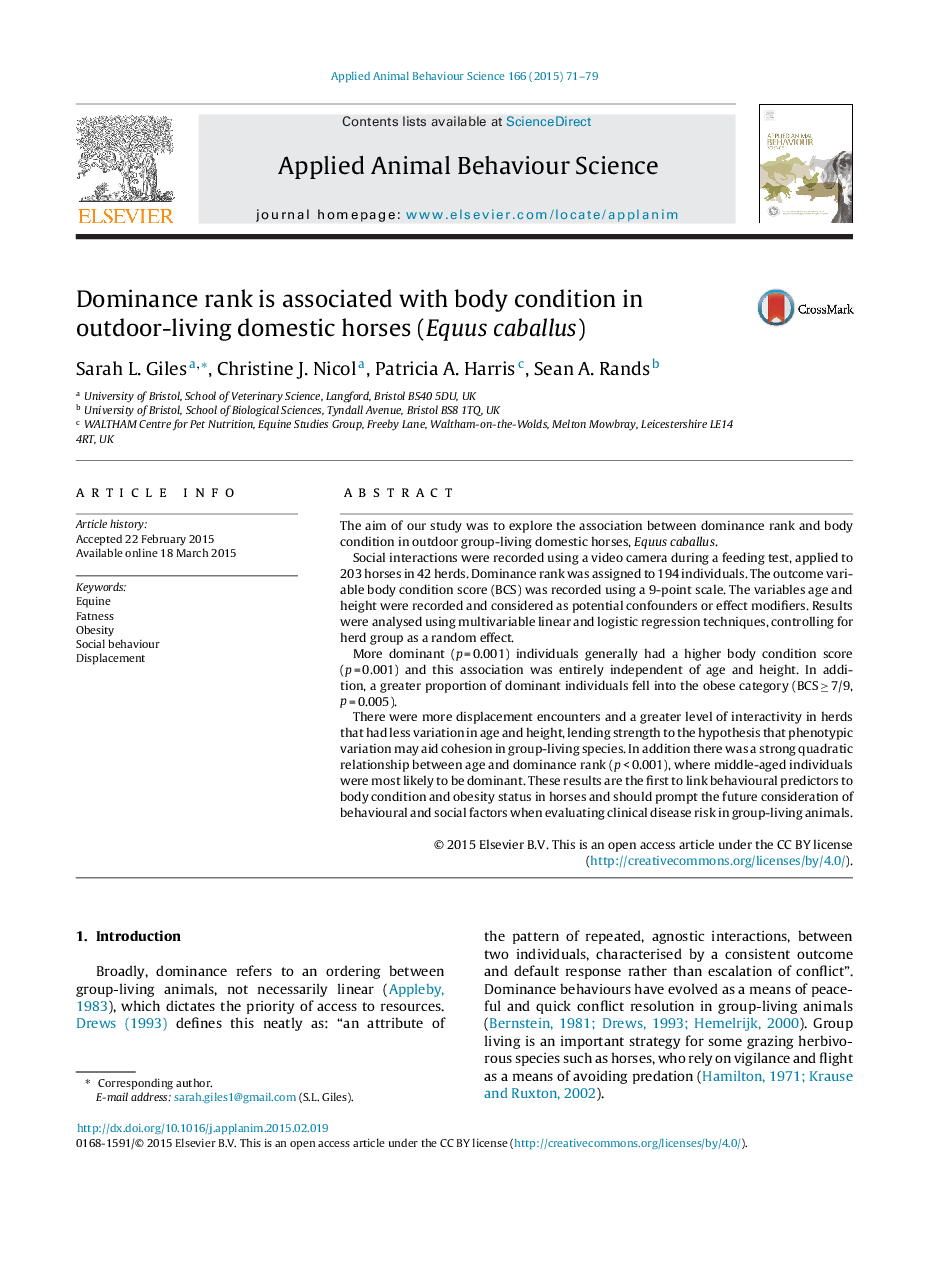| Article ID | Journal | Published Year | Pages | File Type |
|---|---|---|---|---|
| 6379587 | Applied Animal Behaviour Science | 2015 | 9 Pages |
Abstract
There were more displacement encounters and a greater level of interactivity in herds that had less variation in age and height, lending strength to the hypothesis that phenotypic variation may aid cohesion in group-living species. In addition there was a strong quadratic relationship between age and dominance rank (p < 0.001), where middle-aged individuals were most likely to be dominant. These results are the first to link behavioural predictors to body condition and obesity status in horses and should prompt the future consideration of behavioural and social factors when evaluating clinical disease risk in group-living animals.
Related Topics
Life Sciences
Agricultural and Biological Sciences
Animal Science and Zoology
Authors
Sarah L. Giles, Christine J. Nicol, Patricia A. Harris, Sean A. Rands,
